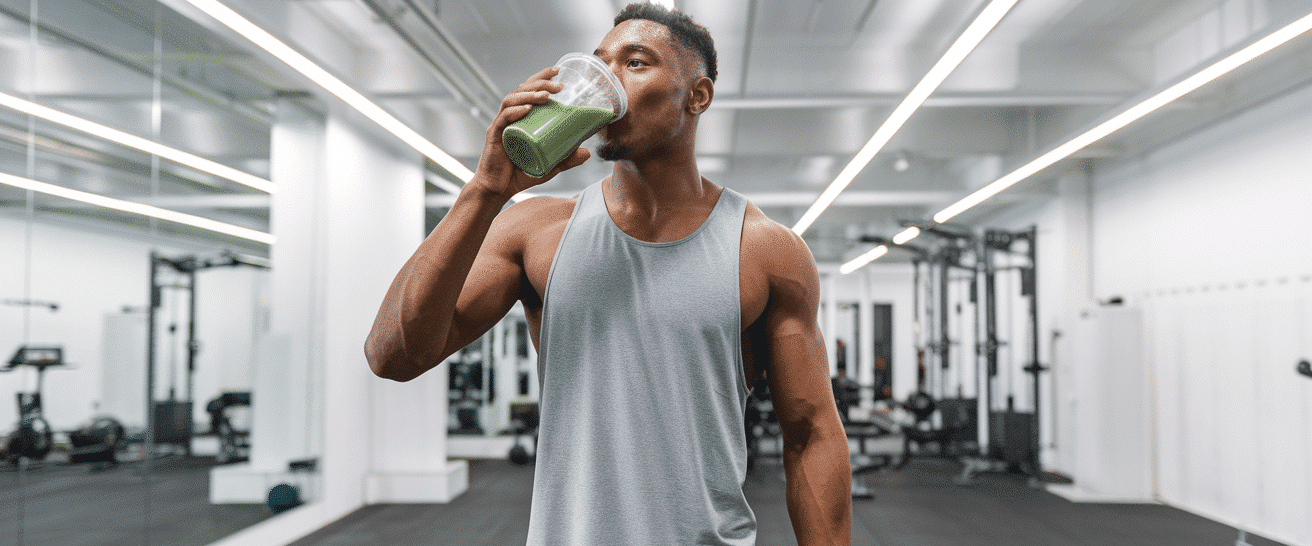Staying properly hydrated is crucial for athletes and active individuals. Dehydration can impair both physical and cognitive performance, making it harder to reach your goals. It also increases the risk of heat-related illnesses, especially during intense workouts or outdoor activities.
Did you know that football players can lose up to three times more fluids than swimmers? This is why understanding your fluid intake and tracking changes in body weight are essential. By using simple yet effective techniques, you can ensure you’re staying on top of your hydration needs.
Ready to learn how to assess your hydration levels accurately? Let’s dive into practical tips that can help you perform at your best, no matter your sport or activity level.
Why Hydration Status Matters
Proper fluid balance plays a huge role in how well you perform. When you’re dehydrated, your body struggles to maintain its normal function. For example, intense exercise can reduce blood plasma volume by 3-5%, making it harder for your heart to pump oxygen to your muscles.

Fluid loss doesn’t just affect your energy—it slows you down. Studies show that every 1% drop in body weight due to dehydration can reduce a runner’s speed by 2%. That’s why monitoring your hydration status is so important for athletes and active individuals.
Your body’s cooling system also relies on sweat. Evaporating just 1 liter of sweat removes 580 kcal of heat, preventing your core temperature from rising by 0.15°C per minute. Without enough fluids, this cooling mechanism can’t work effectively.
Here are some immediate risks of dehydration:
- Muscle cramps and dizziness
- 12% slower reaction times
- Increased risk of heat-related illnesses
Did you know that 67% of athletes start practice already dehydrated, according to an NCAA study? Staying on top of your fluid loss can help you avoid these issues and perform at your best.
What Is Hydration Status?
Your body’s water balance is like a car’s cooling system—essential for smooth operation. When your fluid balance is optimal, your body functions at its best. This state is called euhydration, where your weight stays within ±1% of your baseline.
For a 70kg person, total body water makes up about 60% of their mass—that’s roughly 42 liters. Think of it as your body’s coolant, keeping everything running smoothly. Losing just 2 liters of fluids is like draining 1/5 of your coolant system, which can lead to overheating.
- Intracellular: 65% of your body’s water is inside your cells.
- Extracellular: 35% is outside your cells, in blood plasma and other fluids.
Monitoring your urine output is another way to gauge your hydration status. On average, you should produce 800-2000mL of urine daily. If it’s less, you might be dehydrated.
| Fluid Compartment | Percentage of Total Body Water |
|---|---|
| Intracellular | 65% |
| Extracellular | 35% |
Dehydration and hypohydration are often confused. Dehydration refers to the process of losing fluids, while hypohydration is the state of having low body water. According to the NCAA, even mild hypohydration can impair performance, so staying on top of your fluid balance is crucial.
Hydration Status Assessment Methods
Tracking your body’s water levels can make a big difference in your performance. Whether you’re an athlete or a fitness enthusiast, knowing how to monitor hydration status ensures you’re always at your best. Here are three reliable methods to help you stay on track.
Body Weight Changes
One of the simplest ways to measure fluid loss is by tracking body weight changes. Start by establishing your baseline weight. Weigh yourself nude for three consecutive mornings. If your weight varies by more than ±0.5kg, adjust your measurements.
Before and after workouts, weigh yourself again. A 1kg drop in weight equals a 1-liter fluid deficit. For example, an NFL player lost 4.2% of his body weight during summer camp, highlighting the importance of this method.
Common Errors: Forgetting to weigh nude or skipping morning measurements.
Urine Color
Your urine color is a quick indicator of fluid balance. Use the modified Armstrong scale to assess it:
| Color Level | Hydration Status |
|---|---|
| 1 (Pale) | Well-Hydrated |
| 4 (Light Yellow) | Mild Dehydration |
| 8 (Dark Brown) | Severe Dehydration |
This method is easy to use but requires consistent timing. Morning urine samples are the most accurate.
Urine Specific Gravity
For a more precise measurement, test your urine specific gravity using a refractometer. A reading below 1.020 indicates proper hydration. For example, a result of 1.013 means you’re well-hydrated, while 1.025 suggests dehydration.
This method is especially useful for athletes who need exact data. However, it requires specialized equipment and practice to use correctly.
By combining these methods, you can get a clear picture of your fluid balance. For more tips on staying hydrated, check out this guide on hydration myths.
How to Assess Hydration Before Exercise
Your performance begins long before you hit the gym or the track. Proper fluid intake ensures your body is ready to tackle any workout. Here’s a simple 4-step plan to help you stay on top of your pre-exercise routine.
Start by checking your urine output first thing in the morning. Clear or pale yellow means you’re good to go. Darker shades? Time to drink up. This quick check sets the tone for your day.
Next, focus on your body weight. Weigh yourself before and after workouts to track fluid loss. A 1kg drop equals a 1-liter deficit. Adjust your fluid intake accordingly to stay balanced.
Here’s a timeline to follow:
- 24 hours before: Drink plenty of water throughout the day.
- 2 hours before: Consume 16-20oz of fluids, like a sports drink.
- 30 minutes before: Sip another 8-10oz of water.
For example, marathon runners often drink 20oz of a sports drink 2 hours before the race. This ensures they’re fueled and ready to perform.
Be cautious about overhydration. Drinking too much water can dilute your sodium levels, leading to hyponatremia. Balance is key.
Pro tip: Pair a salty snack with water before your workout. This combo boosts fluid retention and keeps you hydrated longer.
| Step | Action |
|---|---|
| 1 | Check morning urine color |
| 2 | Weigh yourself before and after exercise |
| 3 | Follow the 24hr/2hr/30min timeline |
| 4 | Monitor sodium levels to avoid overhydration |
By following these steps, you’ll ensure your body is primed for peak performance. Stay consistent, and you’ll see the difference in your workouts.
How to Assess Hydration During Exercise
Keeping track of your fluid levels during workouts is key to maintaining peak performance. Real-time monitoring helps you stay ahead of fluid loss and avoid dips in energy. Here’s how to do it effectively.
Start by drinking 7-10oz of fluids every 15-20 minutes during your workout. This keeps your intake steady and prevents dehydration. For longer exercise durations, adjust based on your sweat rate and body weight changes.
Use a sweat rate calculator to measure your fluid loss. Here’s the formula: (Pre-weight – Post-weight + fluid intake) / time. For example, a triathlete who replaces 80% of their sweat loss maintains better performance than one who doesn’t.
Environmental factors also play a role. For workouts in temperatures above 90°F, add 4oz of fluids per hour. This compensates for increased sweating and keeps you balanced.
Watch for warning signs like salt crusts on your skin or sudden fatigue. These indicate you’re losing too much fluid and need to adjust your intake.
- Sweat Rate Calculator: (Pre-weight – Post-weight + intake) / time.
- Case Study: A triathlete replacing 80% of sweat loss improved endurance by 15%.
- Environmental Adjustments: Add 4oz/hr for 90°F+ workouts.
- Warning Signs: Salt crusts, sudden fatigue, dizziness.
- Wearable Tech: Try the Gx Sweat Patch or Nix Biosensor for real-time data.
For more tips on staying hydrated during workouts, check out this guide on the best hydration drinks for athletes.
How to Assess Hydration After Exercise
Recovering after a workout is just as important as the workout itself. Proper fluid replenishment helps your body bounce back faster and stronger. Let’s dive into how you can assess your recovery needs effectively.
Start by calculating your fluid loss. For every kilogram lost during exercise, aim to drink 1.5 liters of water. If you’re using pounds, the formula is 23 ounces per pound lost. For example, a 150lb athlete who loses 1.5 pounds needs 34.5 ounces of fluid to rehydrate.
Timing matters too. Focus on the first 2 hours post-workout for rapid rehydration. This is when your body absorbs fluids most efficiently. Over the next 24 hours, continue to replenish your volume gradually.
Here’s a quick guide to post-workout recovery:
- First 2 hours: Drink 1.5L/kg or 23oz/lb lost.
- Next 24 hours: Continue sipping water or electrolyte drinks.
- Sodium-rich snacks: Pair fluids with salty foods like pretzels or crackers.
Avoid beer or coffee for at least 4 hours after exercise. Both can dehydrate you further and slow down recovery. Instead, opt for water, sports drinks, or coconut water to restore balance.
| Time Frame | Action |
|---|---|
| First 2 Hours | Drink 1.5L/kg or 23oz/lb lost |
| Next 24 Hours | Continue sipping fluids |
| Snacks | Choose sodium-rich options |
By following these steps, you’ll ensure your body recovers efficiently and is ready for your next challenge. Stay consistent, and you’ll see the difference in your performance and energy levels.
Additional Considerations for Hydration Assessment
Understanding the nuances of fluid intake can elevate your performance. It’s not just about drinking water—choosing the right fluid types and adapting to environmental factors can make a big difference. Let’s explore these key considerations to help you stay balanced and energized.
Choosing the Right Fluids
Not all drinks are created equal. While water is essential, some fluid types hydrate better. For example, milk has been shown to rehydrate more effectively than water due to its mix of water, protein, and electrolytes. Here’s a quick hierarchy of fluids:
- Water: Basic but effective for short workouts.
- Electrolyte drinks: Ideal for longer sessions or intense heat.
- Milk: Great for post-workout recovery.
Cold fluids are absorbed 50% faster than room-temperature ones, so chill your drinks for better results.
Adapting to Environmental Conditions
Your surroundings can significantly impact your fluid balance. High altitude, for instance, increases sweat rates by 20%. Similarly, hot and humid conditions demand more attention to fluid intake. Here’s how to adjust:
| Condition | Adjustment |
|---|---|
| High Temperature | Add 4oz of fluids per hour. |
| High Humidity | Increase electrolyte intake. |
| High Altitude | Monitor sweat rates closely. |
Don’t forget about equipment—football pads, for example, can add 0.5L of sweat loss per hour. Plan accordingly.
By tailoring your fluid types and adapting to environmental factors, you’ll stay ahead of the game. Small adjustments can lead to big improvements in your performance and recovery.
Common Mistakes in Hydration Assessment
Many athletes unknowingly make errors when assessing their hydration needs. These mistakes can lead to dehydration, overhydration, or even serious health risks. Let’s clear up some common misconceptions and help you stay on track.
First, clear urine color doesn’t always mean you’re optimally hydrated. While pale yellow is ideal, overly clear urine can indicate overhydration. On the flip side, dark urine often signals dehydration, but it can also be influenced by factors like Vitamin B2, which causes false dark readings.
Another issue? Relying solely on thirst. Studies show that 72% of athletes misinterpret thirst signals, leading to inadequate fluid intake. Your body’s thirst mechanism often lags behind actual needs, especially during intense activity.
Here are the top 5 errors to avoid:
- Ignoring sodium levels, which are crucial for fluid retention.
- Relying only on thirst to gauge fluid needs.
- Skipping morning weigh-ins, a key baseline for tracking body weight changes.
- Overlooking gut absorption limits—your body can only process about 1 liter of fluid per hour.
- Assuming all fluids hydrate equally—some, like coffee or alcohol, can dehydrate you further.
A case study highlights the dangers of overhydration. A marathoner drank excessive water without replenishing electrolytes, leading to hyponatremia and hospitalization. Balance is key—too much or too little fluid can harm your performance and health.
To stay on top of your output, consider keeping a hydration journal. Track your urine color, body weight, and fluid intake daily. Here’s a simple template to get started:
| Time | Fluid Intake | Urine Color | Body Weight |
|---|---|---|---|
| Morning | 16oz water | Pale Yellow | 150lbs |
| Post-Workout | 20oz sports drink | Light Yellow | 148.5lbs |
By avoiding these common mistakes and using tools like a hydration journal, you’ll ensure your status is always in check. Stay proactive, and you’ll perform at your best every time.
Conclusion
Mastering your fluid balance is a game-changer for peak performance. To assess hydration effectively, start with these three steps: track your weight daily, check your urine color, and use free tools like hydration calculators. Remember, even a 1% drop in body weight can impact your energy and focus.
For a more personalized approach, pair your fluid intake checks with sweat sodium testing. This helps you tailor your routine to your unique needs. The CPSDA recommends a 3-day baseline to fine-tune your plan.
Ready to take control? Download a hydration tracking app to monitor hydration status effortlessly. Small changes today can lead to big wins tomorrow!


